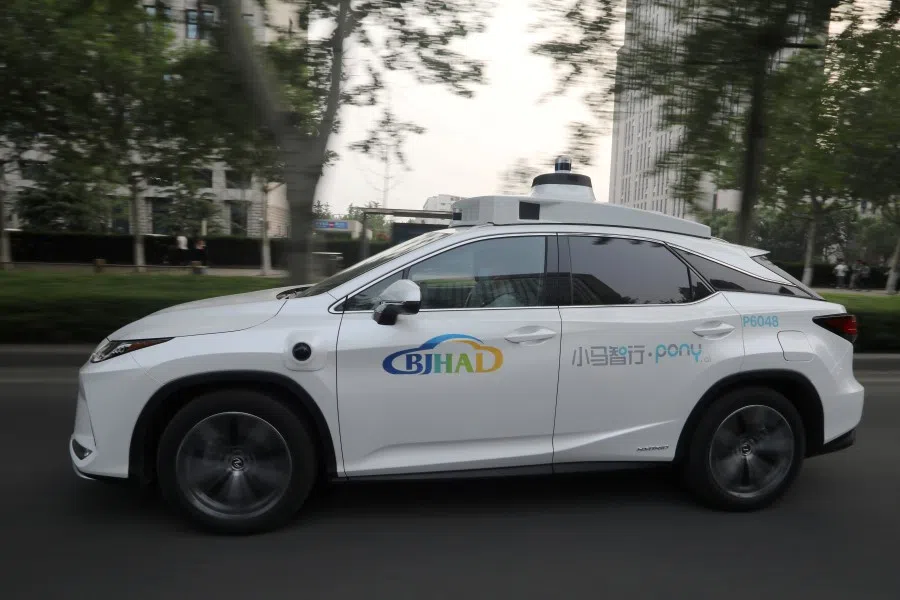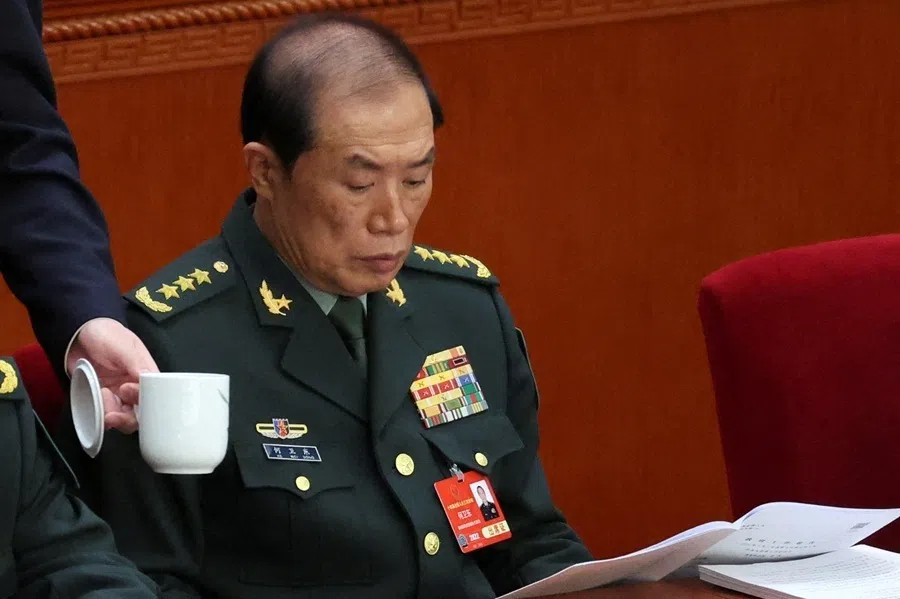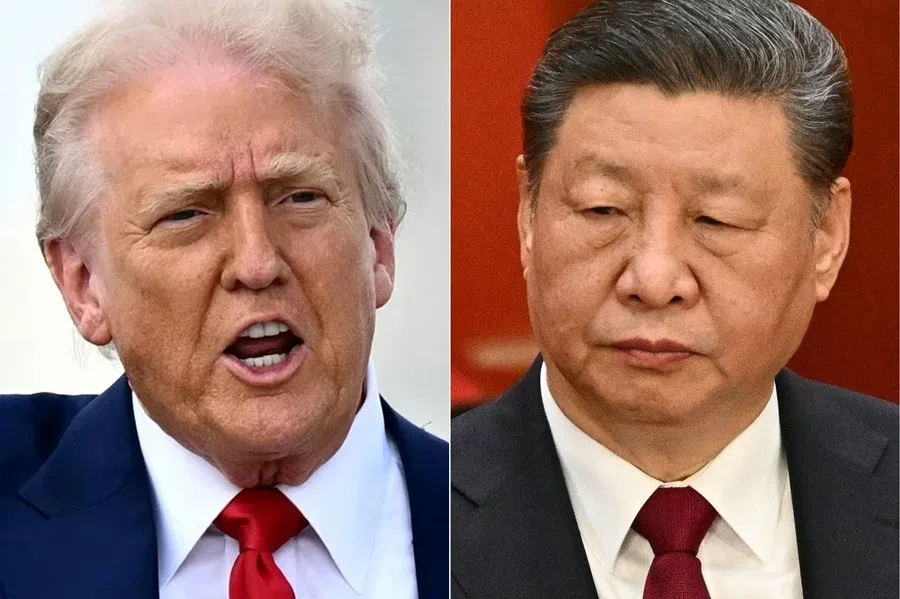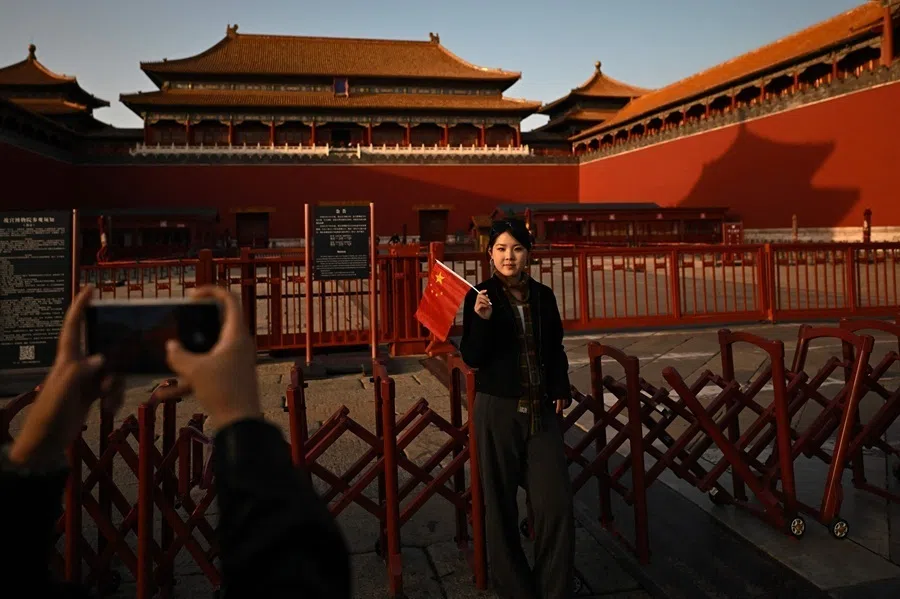China-US competition: Who will set the rules in a digital world?
Analyst Zheng Weibin says that while the China-US competition is a tussle for power that some would compare to the Cold War of the 20th century, digital technology is making all the difference in the 21st century. Today's competition is taking place amid changing definitions of national strength and economic power, and China needs to catch up in terms of growing its digital economy and meeting the challenges that come with it.

It is easy to see the current China-US competition as a continuation or repeat of the 20th century US-Soviet Cold War. Part of an ideological legacy of the previous century, the Taiwan issue has become a major area of US-China competition, and it leads one to think that the current situation is a resurrection of a 21st century Cold War.
However, I would like to emphasise that the current China-US competition is not a new Cold War, nor is it a continuation of the old Cold War.
While the competition between China and the US cannot be read without a traditional analysis of geopolitics and great power competition, digital technology coming into the mix has fundamentally changed the nature of China-US bilateral competition.
...spurred by digitalisation, it is a competition about global governance methods and economic production models.
Who will set standards and rules for the next century
This is not a competition of traditional power, or a contest of ideologies. The involvement of digital technology has fundamentally changed the substance of power and the form of competition. It can even be said that the China-US competition will not determine the direction of history, but is a contest of who will set the rules and standards of mainstream development of the globalised economy and digitalisation.
In other words, we are now competing on economic development and technological innovation; spurred by digitalisation, it is a competition about global governance methods and economic production models.
And so, Beijing should note the following points about China-US competition that differ from traditional power contests, and avoid falling into any traps because it has overlooked these differences.
First, when discussing China-US competition, many speak well of the size of China's GDP that has been more than 70% of the US's for two consecutive years, which is something that previous challengers like the Soviet Union, Germany, and Japan did not manage.

Indeed, great power competition is based on economic strength, which affects the resources available and the ability to withstand competition. The shrinking gap in GDP between China and the US is a gauge of the shrinking gap in the economic strength of both countries.
But this does not mean the US is declining or lagging behind. GDP is just one gauge of strength. Besides, the global economy is currently in a state of transition in the new era. The rapid rise of the digital economy is turning conventional knowledge about national strength on its head, and GDP calculations do not completely represent the economic strength of countries.
China still has to catch up to US digital economy
In terms of the scale of the digital economy, the gap between China and the US is clearly bigger than the gap in GDP. Figures from the China Academy of Information and Communications Technology show that the size of China's digital economy is less than 40% of the US's. Besides, looking at the income and market value in recent years of leading internet companies, as well as the number and frequency of unicorn enterprises that have emerged in the market, the gap between China and the US might grow, which Beijing should note.
The changes that digital technology brings to the traditional economy will affect economic strength as well as globalisation. Traditional globalised trade based on goods and services will change with the digital factor coming in. That is, digital services will become a third trading sector, besides goods and services.
For China, its core or leading position in the traditional global supply chain may be weakened, especially as the US works with its allies to make supply chains more diverse and multi-centric to avoid an over-reliance on China, and digitalisation gives them more possibilities and space to do so.
What part China's digital trade will play in the new framework of globalised trade and whether China's digital supply chain can maintain its current place in the traditional supply chain are not yet known.

With digitalisation, even if digital trade will not be the main driver of globalised trade in the short term, it will gradually grow to become an important part of global trade. What part China's digital trade will play in the new framework of globalised trade and whether China's digital supply chain can maintain its current place in the traditional supply chain are not yet known.
Although in recent years China has strengthened its trade links with other countries through the Digital Silk Road, likewise the US is making digital trade part of its free trade agreements (FTAs). Right now, the US is expanding the number of countries with which it has FTAs, which Beijing should not overlook.
To avoid being at a disadvantage in the digital era, Beijing needs to actively develop its digital economy. However, Beijing's recent regulatory moves on internet technology companies are truly surprising, and make people wonder if Beijing is sacrificing its economy for political interests.
In some sense, it is necessary to regulate internet technology titans, but how and to what degree is worth discussing.
More innovation needed
Currently, in China's online discussions, it is a common view that internet companies easily make a lot of money through their volume of users and monopolistic position, but they do not really use technological innovation in the real economy, especially the manufacturing sector. In late 2020, state media said internet companies should not just "think about a few cabbages" - as transacted in the community group-buying market - but should do more in terms of technological innovation.
Is it a contradiction to develop both the service and manufacturing sectors? Obviously not. Especially now in the digital era, they are not mutually exclusive but symbiotic. In the age of the digital economy, the lines between the traditional primary, secondary, and tertiary industries will become less defined. Even the manufacturing sector will provide more digital services in the digital era. According to consulting firm McKinsey & Company, by 2030, 30% of car manufacturers' income will come from the digital services they provide.
In this digital age, developing the manufacturing sector is no longer the only way to support and grow a strong economy.

Furthermore, the growth of digital technology can lead to a virtuous cycle. Take AI technology for example. AI is inseparable from data, algorithms, and computing power. The more developed the digital services sector, the greater the demands on computing power, which could prompt more companies to develop powerful software to support computing needs. At the same time, internet companies bringing together the experience and results of real-world scenario development, algorithm design, as well as big data accumulation and usage, could also be applied to manufacturing and other sectors.
In this digital age, developing the manufacturing sector is no longer the only way to support and grow a strong economy. There is no conflict in developing both the manufacturing and service sectors, where the lines will become less defined in the digital age - the key lies in how to use the changes such digital technology brings.
Digital technology will not just change the nature of the economy and how trade is conducted, but it will also change what makes up a country's strength. For instance, whichever country has stronger computing power will have more influence. In a digital world, everything will have to be supported by computing power - this is the hard power in a digital world.
Hence, looking at the possible impact of the digital age on the traditional economy, national strength, and even power, this new competition between China and the US is clearly different from the US-Soviet competition during the Cold War. The China-US competition is one of standards and rules going in a common direction, and not one of developmental directions intended to change history.
In short, even amid shifts in the substance of power, Beijing needs to be mindful that it does not overlook the differences in gauging strength, This is a new competitive relationship that cannot be gauged and assessed with traditional thinking and standards.
Related: A metaverse with Chinese characteristics? | Humanity needs to face the digital age as one family, not disparate warring tribes | The politicisation of China-US trade ties: Showdown between capitalism and communism? | China's crackdown on cryptocurrencies: Trade-offs between stability and innovation



![[Big read] Prayers and packed bags: How China’s youth are navigating a jobless future](https://cassette.sphdigital.com.sg/image/thinkchina/16c6d4d5346edf02a0455054f2f7c9bf5e238af6a1cc83d5c052e875fe301fc7)

